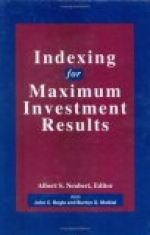Tab Article
Twenty four years after investment managers decided to implement Standard & Poor's 500 indexing strategy, the verdict is in. The first indexers beat more than 99% of all actively managed stock funds. Over the last ten years, funds based on the S&P 500 out-performed more than 80% of all mutual funds. Today about $450 billion is indexed to the S&P 500, almost 10% of the total market value of all stocks traded in the US. The strategy has been applied to other asset classes, including bonds and real estate. In total, indexing now accounts for more than 25% of the investment methodology of all pension funds in the US. Topics include: choosing a benchmark; overview of the marketplace; using derivatives to index; performance track record versus active management; index methodology and other styles; and index price effects on constituent securities. Albert S. Neubert is director of the Domestic S&P Indexes Unit within the Equity Services Group.


